Planning a trip to Ethiopia? Look no further for information and tips on how to make the most of your adventure. With a rich history and culture, diverse landscapes, and welcoming locals, Ethiopia is a must-visit destination for any traveler. Whether you’re interested in exploring ancient ruins, trekking through mountains, or immersing yourself in local traditions, a trip to Ethiopia tourism has something for everyone.
In this comprehensive guide, we will provide you with important information on choosing the right airlines for your trip to Ethiopia and share tips on finding cheap flight deals. We will also cover Ethiopian travel requirements, the must-visit places in Ethiopia, as well as suggest local delicacies to try during your travels. And a lot more. Whether you’re a first-time visitor or a seasoned traveler, this guide has everything you need to plan an unforgettable trip to Ethiopia.
#1 Best Time to Visit Ethiopia
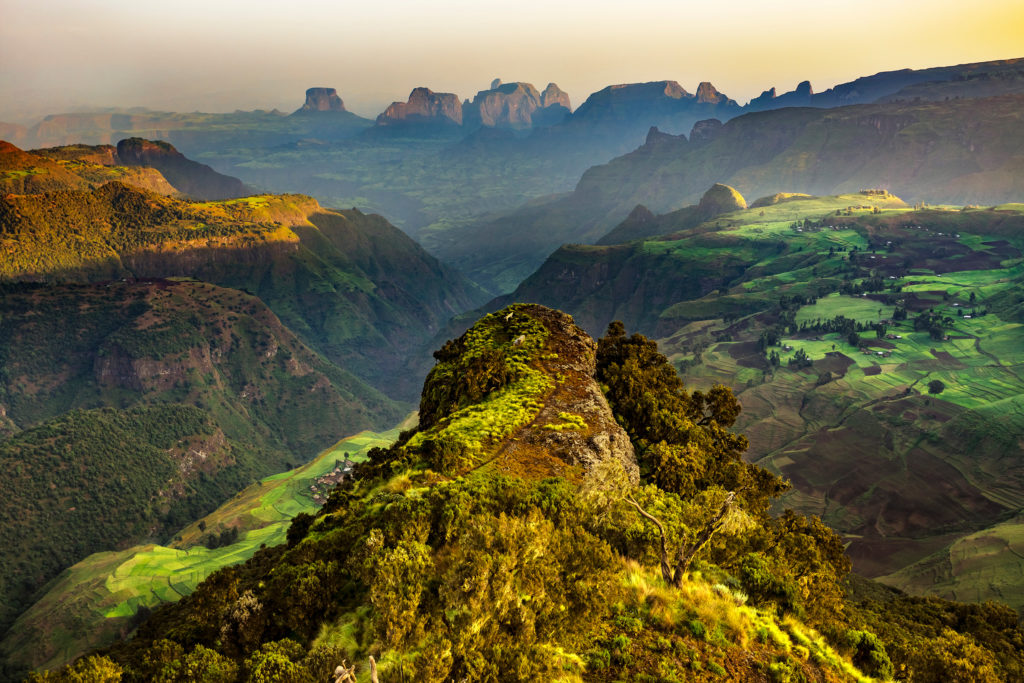
Before you start planning your trip to Ethiopia, it’s important to understand the different tourism seasons. Ethiopia is a country with a diverse climate and geography, and the best time to plan a trip to Ethiopia depends on the activities you want to do and the regions you plan to visit. Generally, the country has two main seasons: the dry season and the rainy season. However, the timing and duration of these seasons can vary based on the region.
The dry season in Ethiopia runs from October to May, and it is generally considered the best time to visit. The weather is sunny and dry during this time, making it ideal for outdoor activities such as hiking and sightseeing. It is also the best time to visit the national parks and go on a wildlife safari. The dry season is also a popular time for cultural events and festivals, such as the Ethiopian New Year (Enkutatash), which falls in September.
The peak tourist season in Ethiopia is from October to January, and during this time, the country can get quite busy, and prices may be higher than usual. Therefore, booking your accommodation and tours in advance is recommended if you plan to travel during this period.
If you plan to visit the northern regions of Ethiopia, such as Lalibela, Gondar, and Bahir Dar, the best time to visit is from October to March. The weather is cool and dry during this time, making it ideal for sightseeing and exploring ancient churches and historical sites. The temperatures can drop significantly at night, so it is recommended to bring warm clothing.
If you plan to visit the southern regions of Ethiopia, such as the Omo Valley, the best time to visit is from June to September. During this time, the region experiences a short rainy season, bringing the landscape to life, and the rivers and waterfalls are fully flowing. It is also a great time to visit the various tribes and communities in the Omo Valley, as they celebrate their traditional festivals during this period.
The rainy season in Ethiopia runs from June to September, and it is generally considered the low season for tourism. During this time, the country experiences heavy rainfall, and some regions may be inaccessible due to flooding or washed-out roads. However, the rainy season can also be a beautiful time to visit Ethiopia, as the countryside turns lush and green, and the waterfalls are at their most impressive. It is also a great time to visit the Danakil Depression, one of the hottest and driest places on Earth, as the temperatures are milder during this time.
Overall, the best time to visit Ethiopia depends on your preferences and the activities you want to do. The dry season from October to May is recommended if you plan to visit the national parks and go on a wildlife safari. If you plan to visit the historical sites and churches in the northern regions of Ethiopia, the best time to visit is from October to March. If you plan to visit the southern regions of Ethiopia and the Omo Valley, the best time to visit is from June to September. However, if you want to experience the country’s traditional festivals and cultural events, visiting during the shoulder season in September is recommended.
It is also important to note that Ethiopia is a year-round destination, and each season has its unique beauty and charm. Therefore, regardless of the time of year, there is always something to see and do in Ethiopia.
For more information on this topic, also read this blog, “ When is the Cheapest Time to Travel to Africa?”
#2 Top Airlines Flying to Ethiopia

Ethiopian Airlines
Ethiopian Airlines is one of the most reliable airlines in Africa. The national carrier flies to all major cities in the African continent, including Johannesburg, Lagos, and Nairobi, among many others. Ethiopian Airlines also reaches remote areas in the country with its modern, safe aircraft fleet. The airlines’ services can be grouped into four categories: Domestic, International, Regional, and Inter-Island. Ethiopian Airlines offers domestic flights from the capital city of Addis Ababa to other major cities in the country, including Gonder, Bahir Dar, and Mekele, as well as to other countries in the continent, such as Kenya and South Sudan. Ethiopian Airlines is a member of the International Air Transport Association (IATA) and operates a frequent-flyer program called Ethiopian Miles.
Etihad Airways
Dubai-based Etihad Airways is the only airline in Africa that has a double-digit market share in air traffic. This is one of the reasons why Etihad Airways is one of the top airlines flying to Ethiopia. With flights to major cities in Africa, as well as a few international destinations in Europe and the Middle East, Etihad Airways is an ideal choice for anyone looking to travel to Ethiopia. As one of the few airlines to operate an aircraft with a double-deck business-class cabin, Etihad Airways is one of the top airlines flying to Ethiopia. The airline is also known for its well-appointed business-class cabins. Etihad Airways offers a variety of in-flight entertainment options, including satellite television, wireless internet, in-seat dining, and even a bar. In addition to flying to all the major African cities, Etihad Airways also offers flights to some international destinations aboard its fleet of Airbus A330 aircraft.
Emirates
With its hub in Dubai, Emirates is the largest airline in Africa and the Middle East. The airline operates a fleet of more than 700 aircraft and has flights to more than 100 destinations in more than 50 countries across the globe. And with its expansive network in Africa, Emirates is one of the top airlines flying to Ethiopia. The airline flies to all the important cities in the continent, such as Johannesburg, Lagos, and Nairobi, as well as Dubai, Abu Dhabi, and other international destinations. The best part about flying with Emirates is its extensive onboard amenities. The airline has a range of amenities for its passengers, such as in-flight entertainment, business-class lounges, and even a dedicated kids’ club.
Lufthansa
Lufthansa is Europe’s most preferred airline and has a strong presence in more than 30 countries across the world. The airline operates a fleet of more than 630 aircraft and has flights to more than 80 destinations, including all the top cities in Africa. Most of Lufthansa’s fleet is fitted with modern, sleek aircraft that are amongst the best in the industry. And with flights to Ethiopia among its many destinations, Lufthansa is one of the top airlines flying to Ethiopia. The airline’s services include onboard amenities such as wireless internet and a range of in-flight entertainment options. Lufthansa also has crew members with a range of skills, including medical and security expertise. And if that’s not enough, the airline is known for its excellent customer service.
Qatar Airways
With a hub in Doha, Qatar Airways is the largest airline in Africa and the Middle East. The airline operates a fleet of more than 100 aircraft and has flights to more than 50 destinations across the globe. And with its extensive network in Africa, as well as other key cities in the continent, Qatar Airways is one of the top airlines flying to Ethiopia. The airline’s onboard amenities include a variety of in-flight entertainment options, such as satellite television, wireless internet, and even a bar. The airline is also known for its excellent customer service.
Royal Air Maroc
Royal Air Maroc is the national airline of Morocco, operating several services to various destinations in Africa and the Middle East. The airline operates a fleet of more than 50 aircraft and has flights to all the top cities in Africa. Most of the airline’s fleet is fitted with modern, safe aircraft that are amongst the best in the industry. And with flights to Ethiopia among its many destinations, Royal Air Maroc is one of the top airlines flying to Ethiopia. The airline’s onboard amenities include a range of in-flight entertainment options such as satellite television, wireless internet, and even a bar, a range of travel options, including holidays and tours. If that’s not enough, the airline is known for its excellent customer service.
Turkish Airlines
One of the oldest airlines in the world and a staple in the global aviation industry, Turkish Airlines operates an extensive network to more than 150 destinations across the globe. And with flights to Ethiopia among its many destinations, Turkish Airlines is one of the top airlines flying to Ethiopia. The airline’s fleet is widely regarded as one of the safest in the industry, and the airline is one of the few that offers complimentary meals during flights. The airline’s services also include a variety of in-flight entertainment options, such as wireless internet and even a bar. The airline is known for its excellent customer service.
United Airlines
One of the largest airlines in the world, United Airlines operates a fleet of more than 1000 aircraft and has flights to more than 200 destinations across the globe. And with flights to Ethiopia among its many destinations, United Airlines is one of the top airlines flying to Ethiopia. The airline’s services include a range of in-flight entertainment options, such as wireless internet and even a bar.
3# A Guide to the Airports Across Ethiopia

In this section, we’ll provide you with a comprehensive overview of the airports across Ethiopia, including the major hubs and smaller regional airports, to help you find the cheap flight deals for your trip.You can sign up for email alerts from airlines and travel sites, as they often send out notifications when there are sales or discounts available. Additionally, consider flying into one of the smaller airports across Ethiopia, as they may offer cheaper flights than the larger international airports. By using these simple tricks, you can find great flight deals and save bigtime.
The first airport in Ethiopia was built in the capital city of Addis Ababa in 1929, during the reign of Emperor Haile Selassie. It was a modest facility with a grass runway and a few small buildings. However, it paved the way for the development of the aviation industry in Ethiopia, which has grown significantly over the past century.
Today, Ethiopia has four international airports: Bole International Airport in Addis Ababa, Mekele International Airport in Tigray, Dire Dawa International Airport in the eastern part of the country, and Bahir Dar International Airport in the northwestern part of the country. Bole International Airport is Ethiopia’s largest and busiest airport, serving as the main hub for Ethiopian Airlines, the country’s national carrier.
- Bole International Airport
Bole International Airport underwent a major expansion in 2003, which included constructing a new terminal building, a new runway, and other facilities. The airport can now handle up to 22 million passengers per year, and it offers a wide range of amenities for travelers, including restaurants, cafes, duty-free shops, and lounges.
- Mekele International Airport
Mekele International Airport is a relatively new airport, opened in 2019 to serve the Tigray region. It is located in the city of Mekele, which is known for its rich history and cultural heritage. The airport has a modern terminal building and can handle up to 1.5 million passengers per year.
- Dire Dawa International Airport
Dire Dawa International Airport is located in the city of Dire Dawa, the second-largest city in Ethiopia. It was built in the 1950s and has undergone several upgrades. The airport serves as a gateway to the eastern part of Ethiopia, known for its natural beauty and diverse wildlife.
- Bahir Dar International Airport
Bahir Dar International Airport is located in Bahir Dar, a popular tourist destination in Ethiopia. The airport has a modern terminal building and can handle up to 700,000 passengers annually. It offers direct flights to several destinations in Ethiopia and neighboring countries such as Sudan and Djibouti.
In addition to these international airports, Ethiopia has several domestic airports that serve smaller cities and towns. These airports are operated by Ethiopian Airlines and other regional airlines, and they play a crucial role in connecting the country’s remote areas with the rest of the world.
#4 Making the Most of Your Trip to Ethiopia by Experiencing these Vibrant Festivals
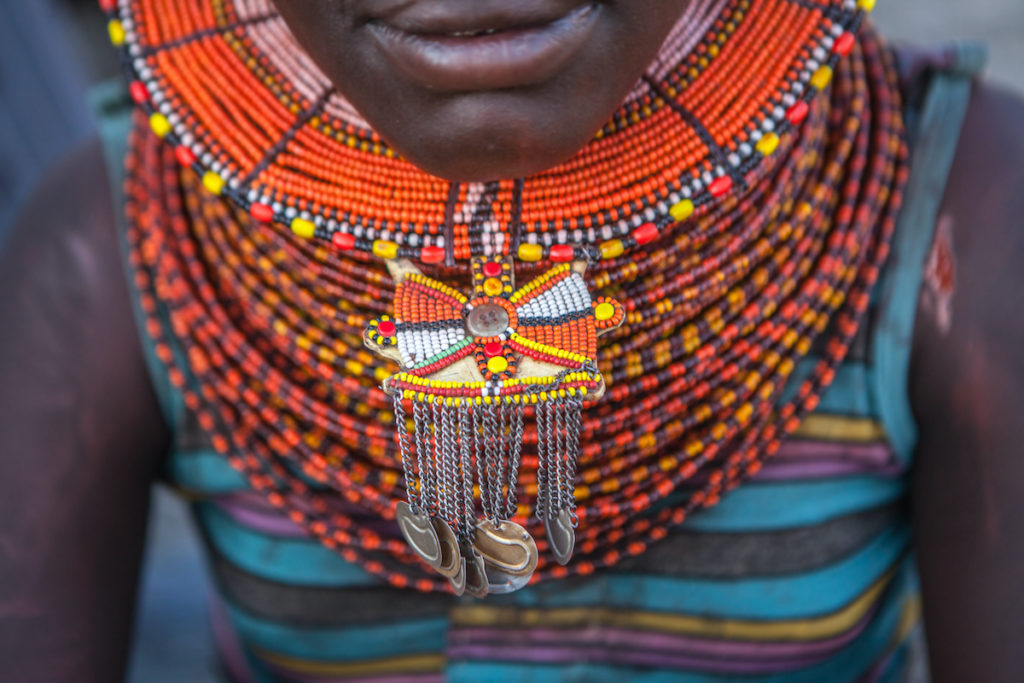
Ethiopia is brimming with natural beauty, rich culture, and unending adventure. Here are some of the most significant festivals in Ethiopia and their dates.
- Timket (Epiphany) – January 19th or 20th
Timket is a major religious festival in Ethiopia, celebrating the baptism of Jesus Christ. Colorful processions, music, dancing, and the blessing of water mark the festival. The most famous Timket celebration takes place in the city of Gondar.
- Ethiopian New Year – September 11th
Enkutatash, or Ethiopian New Year, is a time of joy and celebration in Ethiopia. The holiday falls on September 11th in the Gregorian calendar (September 1st in the Ethiopian calendar) and is marked by feasting, dancing, and gift-giving.
- Meskel – September 27th
Meskel is a Christian festival commemorating the discovery of the True Cross by Saint Helena, the mother of Emperor Constantine. The festival is marked by the lighting of a large bonfire, which symbolizes the smoke that led Saint Helena to the Cross.
- Eid al-Fitr – dates vary
Eid al-Fitr is an Islamic festival that marks the end of Ramadan, the month of fasting. The dates of Eid al-Fitr vary yearly, depending on the Islamic calendar—prayers, feasting, and gift-giving mark the festival.
- Ethiopian Christmas – January 7th
Ethiopian Christmas, also known as Ganna, is celebrated on January 7th and is one of Ethiopia’s most important religious festivals. Church services, feasting, and gift-giving mark the holiday.
- Fasika (Easter) – dates vary
Fasika, or Ethiopian Easter, is a major religious festival in Ethiopia. The holiday falls on a different date each year, depending on the Ethiopian calendar. Church services, fasting, and feasting mark the festival.
- Irecha is a festival celebrated by the Oromo people, the largest ethnic group in Ethiopia. The holiday falls on a different date each year, depending on the Oromo calendar. The festival is marked by prayers, singing, dancing, and the offering of thanks to God and their ancestors.
#5 Meeting Ethiopia Travel Requirements: Essential Items to Pack for Your Trip

If you are planning a trip to Ethiopia, it’s important to know what to pack to ensure a comfortable and enjoyable experience. Here are some essential items to consider packing for your trip to Ethiopia.
- Appropriate Clothing
Ethiopia has a predominantly conservative and modest culture, so it’s important to dress appropriately. It’s recommended to pack light and breathable clothing made from natural fibers like cotton or linen. Long-sleeved shirts and pants are also recommended, particularly for visits to religious sites. Women should bring a scarf or shawl to cover their heads in certain areas. Additionally, if you plan on hiking or trekking, it’s recommended to bring appropriate hiking boots and comfortable, moisture-wicking clothes.
- Sun Protection
Ethiopia has a hot and sunny climate, so it’s important to pack sun protection items. Sunglasses, sunscreen, and a hat are essential to protect your skin and eyes from the harsh sun rays.
- Mosquito Repellent
Ethiopia is a country that is prone to malaria and other mosquito-borne diseases. It’s recommended to bring mosquito repellent with at least 20% DEET concentration to protect yourself from mosquito bites.
- First Aid Kit
It’s always a good idea to pack a small first aid kit with essential items like bandages, antiseptic cream, and pain relievers. Additionally, if you have any pre-existing medical conditions, make sure to bring all necessary medication.
- Travel Adapters
Ethiopia uses Type D and Type L power outlets, so if you plan to bring electronic devices, make sure you pack a travel adapter to avoid any inconveniences.
#6 Discovering the Rich Culture of Ethiopia: A Must-Do on Your Ethiopia Tourism Itinerary

The culture of Ethiopia is incredibly rich and diverse, shaped by its long history, unique geography, and diverse ethnic groups. Here are some key aspects of Ethiopian culture:
- Language: Ethiopia is home to over 80 ethnic groups, each with its own language. The official language is Amharic, but other major languages include Oromo, Tigrinya, and Somali.
- Religion: Ethiopia is one of the world’s oldest Christian countries, with Christianity being established as the state religion in the 4th century. Today, over 60% of Ethiopians are Christian, while about 30% are Muslim.
- Music: Ethiopian music is diverse, with traditional styles ranging from the ancient religious chants of the Ethiopian Orthodox Church to the popular music of the Amhara and Tigray regions. Modern Ethiopian music has been influenced by jazz and pop music from the West.
- Art: Ethiopian art is heavily influenced by religion and history. Traditional art includes religious icons, crosses, and murals, as well as carvings and weavings. Modern Ethiopian artists have been recognized on the international art scene for their innovative styles.
- Clothing: Ethiopian clothing is diverse and colorful, with different regions and ethnic groups having their own traditional dress. The most common traditional dress for women is the habesha kemis, a long dress with brightly colored embroidery.
- Sport: The most popular sport in Ethiopia is football (soccer), with the national team, having had some success on the international stage. Running is also popular, with Ethiopia having produced some of the world’s greatest long-distance runners, such as Haile Gebrselassie and Kenenisa Bekele.
#7 Local Dishes Not to Miss

Your Trip to Ethiopia is incomplete if you do not treat your tastebuds to the country’s delicacies cuisine is a true gem of the African continent. It is a perfect blend of unique spices, fresh ingredients, and cooking techniques that have been passed down for generations. The dishes are full of flavor, nutrition, and culture. In this article, we will take a look at some of the most popular local dishes in Ethiopia.
- Injera and Wot: This is the most common Ethiopian meal. Injera is a sourdough flatbread that is made from teff flour, which is unique to Ethiopia. It is served with a variety of stews called Wot. The most popular wot is Doro Wot, which is made with chicken and is flavored with a spice mix called berbere, onions, garlic, and ginger. Injera and Wot are often eaten with the hands, and the injera serves as a scoop for the wot.
- Kitfo: This is a traditional Ethiopian dish that is made from raw minced beef, flavored with spices, and served with injera. Kitfo is usually eaten with a side of ayib, which is Ethiopian cottage cheese. It is a popular dish during special occasions like weddings and holidays.
- Tibs: This is a dish made from sautéed beef, lamb or goat meat, onions, and peppers. It is often served with injera, bread, or rice. Tibs can be spicy or mild, depending on the preference of the cook. This is a popular dish for lunch or dinner and is usually served with a side salad.
- Shiro: This is a vegetarian dish made from ground chickpeas or lentils. It is usually served as a thick stew and flavored with berbere, onions, garlic, and ginger. It is a popular dish among Ethiopians and is often eaten during fasting periods.
- Kolo: This is a snack that is popular in Ethiopia. It is made from roasted barley or maize and is flavored with spices like salt, garlic, and chili powder. It is a perfect snack for when you are on the go or as a party snack.
- Coffee: Coffee is not technically a dish, but it is an integral part of Ethiopian culture. Ethiopia is known as the birthplace of coffee, and the coffee ceremony is an important part of Ethiopian hospitality. The coffee is roasted and brewed in front of the guests, and the aroma is enjoyed by all.
In conclusion, Ethiopian cuisine is a treasure trove of unique and flavorful dishes that are enjoyed by many. The use of spices, fresh ingredients, and traditional cooking techniques has made Ethiopian cuisine a favorite of many around the world. Whether you are enjoying injera and wot or a cup of coffee, Ethiopian cuisine is a must-try for anyone who loves good food.
#8 Quick Sightseeing Ideas Near Ethiopian Airports
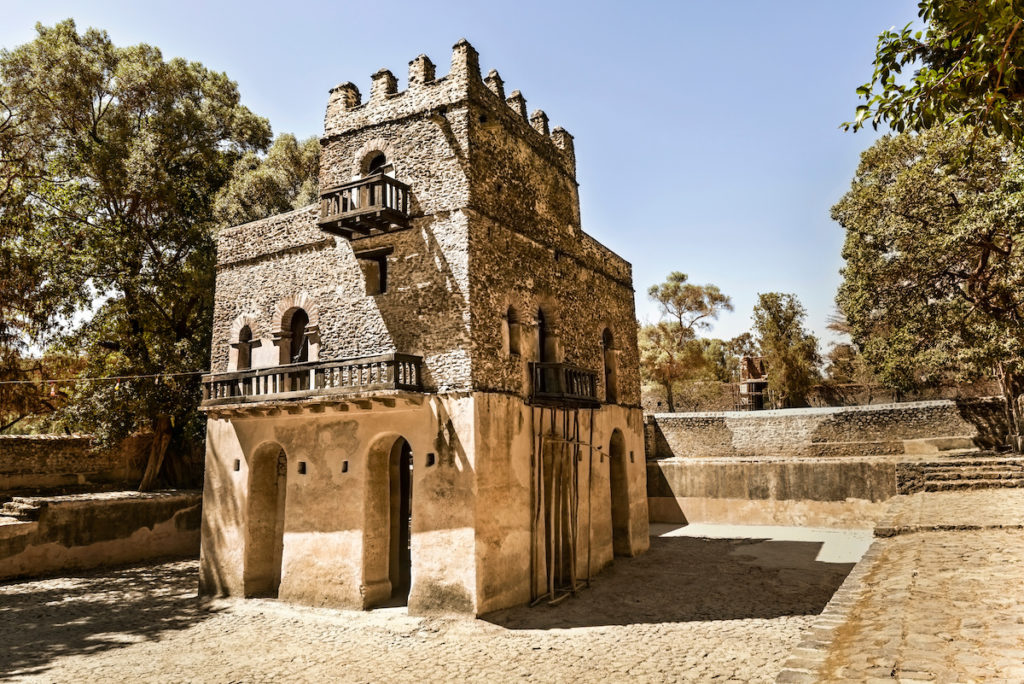
Ethiopia is a country with many fascinating attractions and landmarks, and there are several places to visit near the major airports that will provide visitors with an immersive cultural experience. Here are some of the top places to visit near Ethiopia’s airports:
- Bole International Airport (Addis Ababa): Addis Ababa is the capital of Ethiopia and is known for its vibrant culture and history. Visitors can explore the National Museum of Ethiopia, which houses the famous fossilized remains of Lucy, one of the oldest human skeletons ever discovered. The Ethnological Museum, which showcases the diverse cultures and traditions of Ethiopia, is also a must-visit. Additionally, visitors can take a tour of the Addis Mercato, one of the largest open-air markets in Africa.
- Dire Dawa International Airport: Located in the eastern part of Ethiopia, Dire Dawa is a city with a rich history and cultural heritage. The city has several landmarks worth visiting, including the Kefira Market, the largest market in Dire Dawa, and the Harar Gate, a historic monument that dates back to the 16th century. Visitors can also explore the Dire Dawa Railway Museum, which showcases the history of Ethiopia’s railway system.
- Bahir Dar Airport: Bahir Dar is a city located in the northern part of Ethiopia and is known for its scenic beauty and historical landmarks. Visitors can take a boat trip on Lake Tana, the largest lake in Ethiopia, and visit the ancient monasteries located on the lake’s islands. The Blue Nile Falls, which is located a few kilometers from Bahir Dar, is also a must-visit. It is one of the most beautiful waterfalls in Africa and is a popular tourist attraction.
- Lalibela Airport: Lalibela is a small town located in the northern part of Ethiopia and is home to the famous Lalibela Rock-Hewn Churches. These churches, which are UNESCO World Heritage Sites, are carved out of solid rock and are considered to be one of the most remarkable architectural achievements in the world. Visitors can also explore the nearby Yemrehanna Kristos Church, which is a 12th-century church located in a cave.
In short, Ethiopia is a country with many cultural and historical landmarks worth visiting. These were some wonderful places to visit near Ethiopia’s airports and they provide visitors with an opportunity to explore the country’s rich heritage and immerse themselves in its unique culture.
#9 Some of the Most Loved Hotels Across Ethiopia
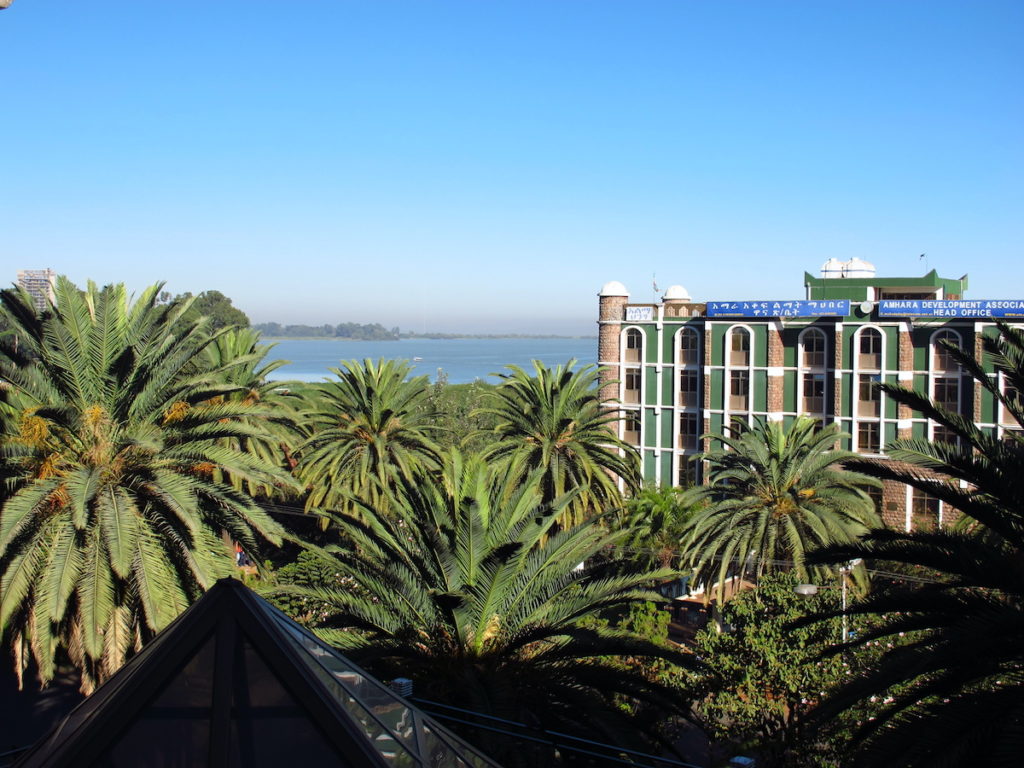
Bole Hotel
With prices from $63 USD a night, the Bole Hotel is a great option for travelers looking to stay in Addis Ababa. It’s one of the most popular places to stay in the city, so you won’t have trouble finding a room. On top of that, it’s a great value. While the cheapest rooms are small, they include free breakfast and free Wi-Fi. If you want to upgrade to a Deluxe King Room, you’ll pay around $140 USD a night, but it’s well worth it. The hotel is in a quiet residential neighborhood and includes a roof-top pool and comfortable rooms with wooden furniture and large bathrooms. The dining room is also a popular spot for breakfast and lunch.
Dallalena Hotel
Sneaking into the $100 USD-a-night price range, the Dallalena Hotel is a great choice for those looking for an upscale stay in Addis Ababa. The hotel is located in the upscale Dallalena district of the city, just a short walk from the river and the National Museum. It’s a five-star hotel that includes a swimming pool, fitness center, and a variety of restaurants and bars. Rooms are modern and include a king-sized bed, a sitting area with a sofa and a TV, and large bathrooms. There are also other rooms that have a small sitting area next to a king-sized bed, so it’s a good option for those traveling with a significant other.
Scott’s Place Hotel
This is another upscale option for travelers who want to stay in Addis Ababa for under $100 USD a night. The Scott’s Place Hotel is located in the upscale Meskerem suburb of the city. It’s a five-star hotel that
includes a restaurant, pool, and a variety of other amenities, including a spa and a business center. Rooms are modern and spacious and include a king-sized bed, a sitting area with a sofa and a TV, a safe, and a large bathroom with a rain shower. They also come with free Wi-Fi, free breakfast, and free parking.
Danab Camping Resort
The Danab Camping Resort is the most affordable hotel option in Ethiopia, and it’s one of the best values in the country. It’s located in the Bole region of the country, on the Lago Menzale border with Sudan. It’s a small and quiet campground in the middle of the desert. The rooms are simple but clean, with running water and a bed made of straw and a mosquito net. They’re either basic or classic, depending on the season, and include a fan, a mat for sleeping on the ground, and a metal bucket for toilet use. While there are no showers, there is running water and a washing area. The restaurant serves good Ethiopian and Sudanese food, and dinner is only $4 USD.
Garden Guest House
This is the best budget option for travelers looking for a place to stay in Ethiopia. It’s also one of the most popular places to stay in the country, so you’ll have no trouble finding a room. The location is also an added bonus. The place is located in the Adama district of the city, which has become a popular neighborhood in recent years. It’s a quiet residential area near the city center, and there are plenty of places to eat, shop, and explore nearby. Rooms are simple but clean and include a bed made of straw, a fan, and a mat for sleeping on the ground. They’re also very affordable, with rates starting at $22 USD per night.
Yehoram House
The final hotel option is the Yehoram House, which is also one of the most affordable options in the country. It’s a small and quiet bed and breakfast located in a quiet residential neighborhood with plenty of trees and parks nearby. Rooms are simple but clean and include a king-sized bed, a fan, and a mat for sleeping on the ground. They’re also very affordable, with rates starting at $35 USD per night.
There are many other great options in the country, but these are some of the best hotel options in Ethiopia for a variety of budgets and needs. There are also some great places to stay in Ethiopia if you’re traveling with a pet.
#10 Ethiopia Places to Visit: Discover the Top Tourist Attractions and Hidden Gems
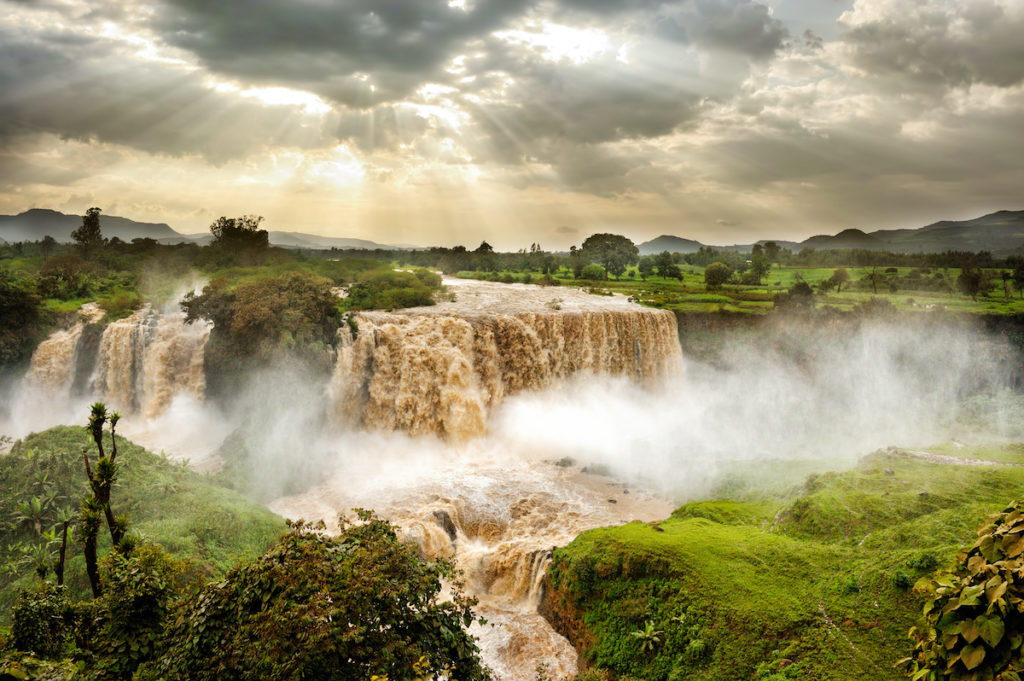
From the rugged highlands to the ancient historical sites, Ethiopia has something for everyone. Here are some of the most popular destinations in this East African country Ethiopia that you shouldn’t miss.
- Lalibela: The ancient town of Lalibela, located in the northern part of Ethiopia, is home to the famous rock-hewn churches. These churches, carved out of solid rock, are a UNESCO World Heritage Site and are considered one of the world’s most remarkable architectural achievements. The town is also known for its traditional woven clothes, pottery, and basketry.
- Simien Mountains National Park: The Simien Mountains National Park, located in northern Ethiopia, is a place of breathtaking beauty. The park is home to the Ethiopian wolf, the walia ibex, and the gelada baboon, as well as stunning views of jagged peaks, deep valleys, and lush vegetation. It is a popular destination for trekking and hiking, and the scenery is simply stunning.
- Danakil Depression: The Danakil Depression, located in the northeast of Ethiopia, is a surreal and otherworldly place that feels like another planet. It is one of the hottest and lowest places on earth and is home to a landscape of colorful sulfuric acid lakes, bubbling geysers, and active volcanoes. It is a challenging destination to reach, but the experience is truly unforgettable.
- Addis Ababa: Addis Ababa, the capital city of Ethiopia, is a bustling metropolis that is home to over four million people. The city is a melting pot of cultures, and visitors can explore the National Museum of Ethiopia, which houses the famous fossilized remains of Lucy, one of the oldest human skeletons ever discovered. The city is also known for its vibrant nightlife, restaurants, and cafes.
- Bahir Dar: Bahir Dar, located in the northwest of Ethiopia, is a city on the shores of Lake Tana, the largest lake in Ethiopia. Visitors can take a boat trip on the lake to visit the ancient monasteries located on its islands. The city is also home to the Blue Nile Falls, one of the most beautiful waterfalls in Africa.
- Gondar: Gondar, located in the northern part of Ethiopia, is known for its well-preserved castles and palaces. Visitors can explore the Royal Enclosure, which houses six castles and several other buildings. The city is also known for its vibrant markets and is a hub for traditional Ethiopian music and dance.
Conclusion
In conclusion, planning a trip to Ethiopia can be an incredibly enriching and rewarding experience. With a rich cultural heritage, diverse landscapes, and welcoming locals, Ethiopia has so much to offer for any traveler. By considering Ethiopia travel requirements and packing essential items, you can ensure a smooth and comfortable trip. And with our guide to the top places to visit in Ethiopia, as well as the vibrant festivals and cultural experiences, you can create an unforgettable Ethiopia tourism itinerary. So start planning your trip to Ethiopia today and get ready for an adventure of a lifetime!
Don’t forget to choose the right airlines and find cheap flight deals to save money on your Ethiopia tourism adventure. With a little research and flexibility, you can find affordable flights to Ethiopia and use the extra money to experience more of the country’s amazing culture and attractions. And by following our tips on the best places to visit in Ethiopia, as well as the must-attend festivals, you’ll create unforgettable memories that will last a lifetime. So start planning your trip to Ethiopia today and get ready for an adventure you’ll never forget!
Last but not the least, If you’re thinking of flying back home or want to explore Africa, then asaptickets is a fantastic option for economy and business class travel. To find out when it’s the cheapest time to fly to Ethiopia, check our website. To check out our lowest prices in asaptickets and limited offers, be sure to head to our African deals page.
You can also contact one of our travel experts for any assistance booking a cheap flight to Ethiopia at toll free number: +8443007983.

Get it right to your inbox by subscribing to ASAP Tickets weekly emails featuring the hottest flight deals from US to the .
Massive savings • Unsubscribe at any time.
You were sucessfully subscribed
Please check your inbox to confirm the subscription
